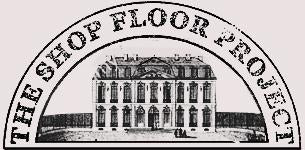
Product Details
A hand thrown and sculpted candle-holder.
Disclaimer: we are sure it goes without saying, but just in case. These are art pieces which explore an 18th century text. They are in no way recommendations for potions and medicine.
The Potter’s Apothecary

A fascinating new collection from British ceramicist Katrin Moye, focuses on John Wesley's book, Primitive Physick; an Easy and Natural Method of Curing Most Diseases as the source of inspiration.

Written in 1740, Wesley was deeply impressed with the pioneering physicians who called for the prevention of disease through healthy living and who recommended inexpensive methods of cure. The book contains suggested cures for common ailments of the time using mostly local ingredients such as herbs and vegetables, fresh milk and cold water. Other remedies appear completely foreign to our contemporary approach to illness. Cures such as ‘hold a live puppy constantly on the belly’ for a stomach ache, ‘suck a healthy woman daily’ as a cure for consumption and ‘wear leaves of celandine upon the feet’ for jaundice drew Katrin Moye into a strange world, one which she delighted in exploring.

Katrin has created a collection of hand-thrown pieces inspired by 18th century apothecary jar silhouettes, such as wet drug jars, leech jars and ointment pots, inscribing some of her favourite ‘cures’ around the surfaces. Remedies such as “Infuse an ounce of wild parsley seeds in a pint of wine for twelve days” and “Tie your garter smooth and tight under your knee” are written amongst Katrin’s glorious patterns.

Katrin’s ointment pots and jars are inspired by the shapes of 16th century delftware ointment pots (below right) and are inscribed the names of typical ointment ingredients used in John Wesley’s time such as Bear’s Grease, Hog’s Lard and Virgin’s Beeswax. These ingredients are mentioned in various cures throughout the ‘Primitive Physic’.

The collection of pill slabs are inspired by decorative 17th century versions (top left) which would have been used to mix pills and ointments. When other methods of pill making were introduced, such tiles were often then used for decoration and advertising.

Other shapes in the collection include the ‘leech jars’. Leeches were used in the practice of bloodletting, which was once carried out to treat a wide range of diseases and medical conditions. Leech jars were used to hold leeches and would have been on sale to medical practitioners, hence the air holes pierced in the covers so the leeches could be kept alive!

As always with Katrin’s work there is much thought and research behind the pieces. This collection explores the artist’s ongoing interest in delftware shapes, 17th century forms and historical literature. It perfectly reflects her unique way of combining these disparate influences into exciting contemporary pieces.




















